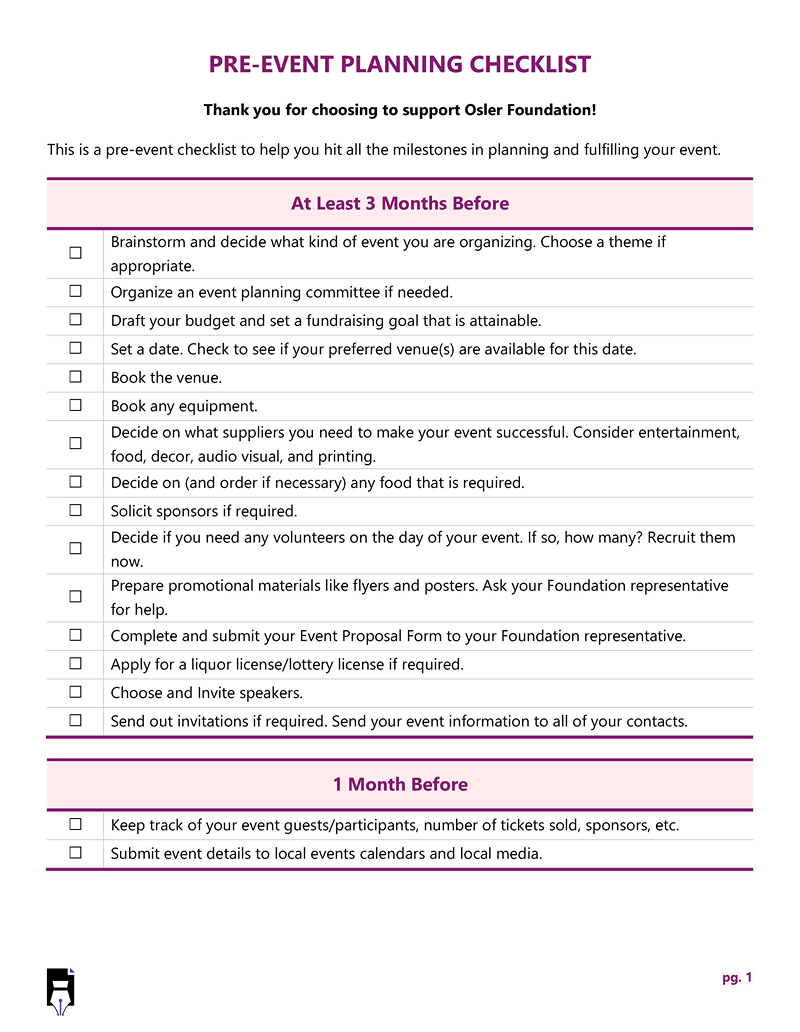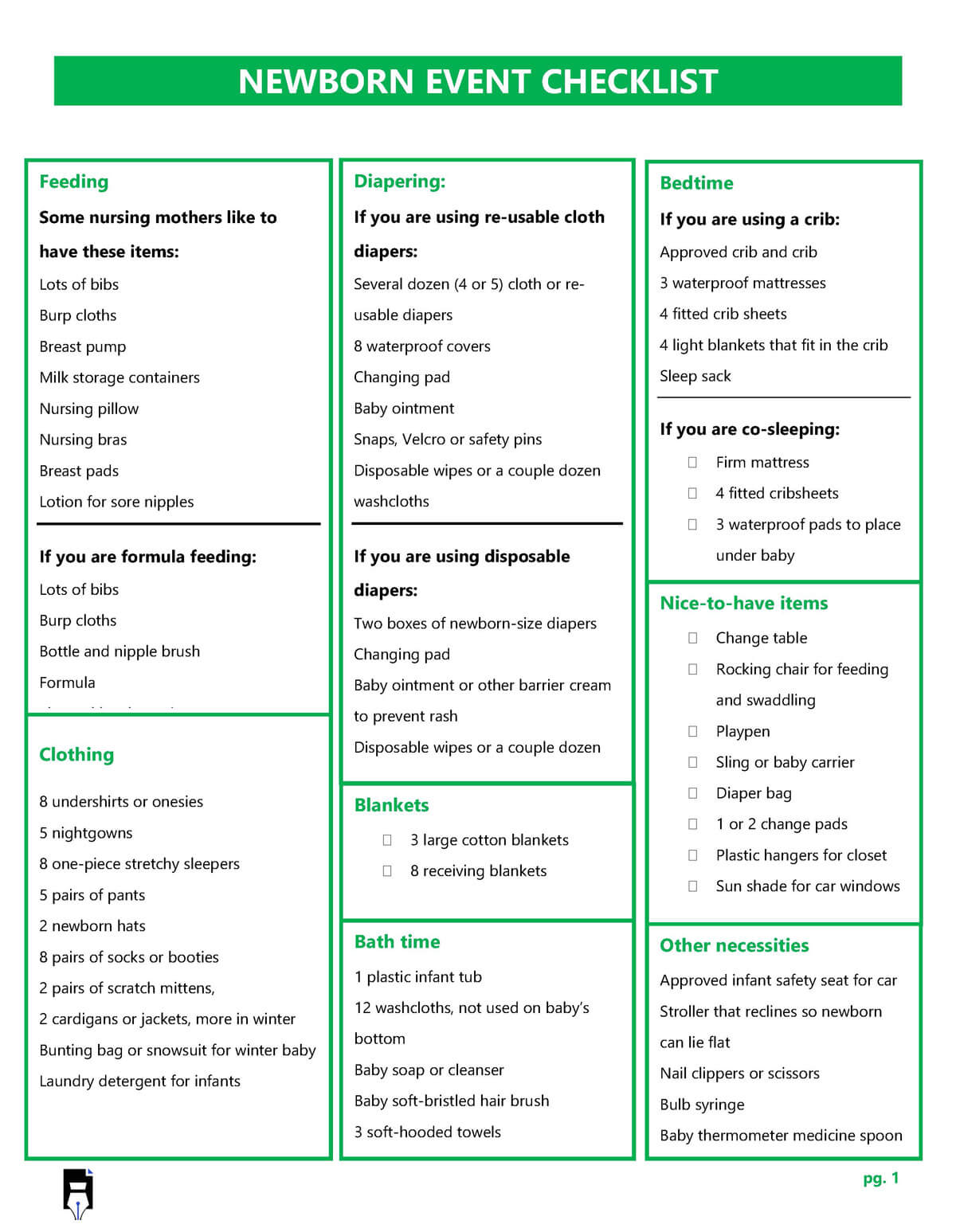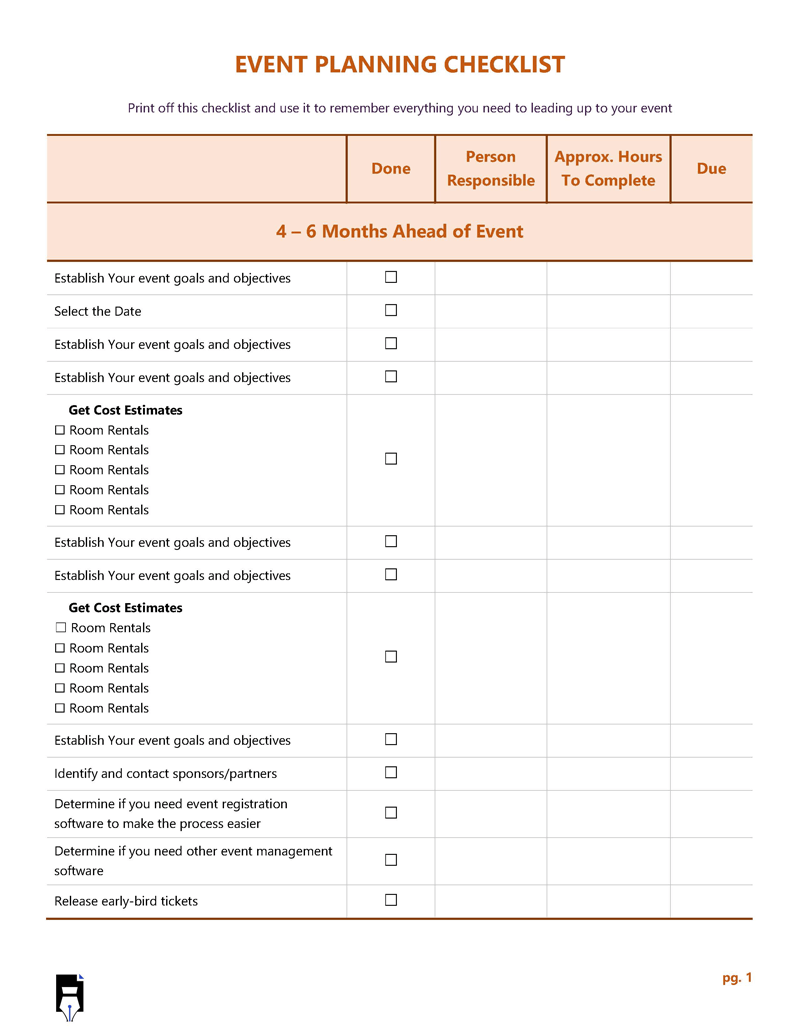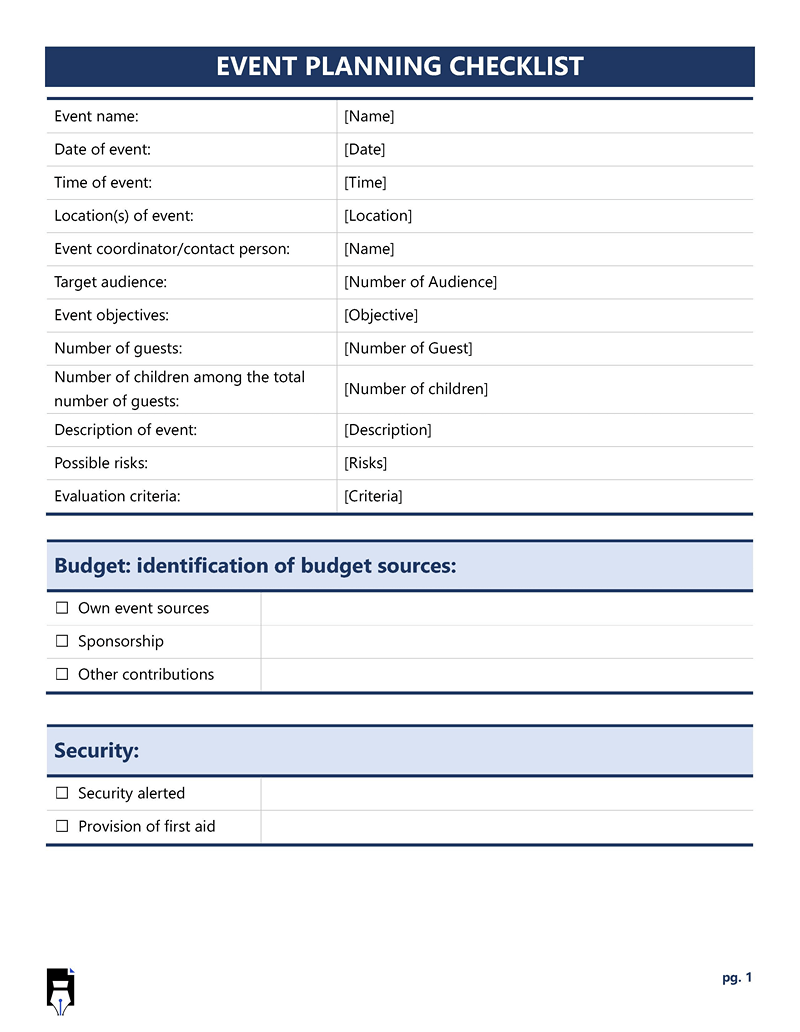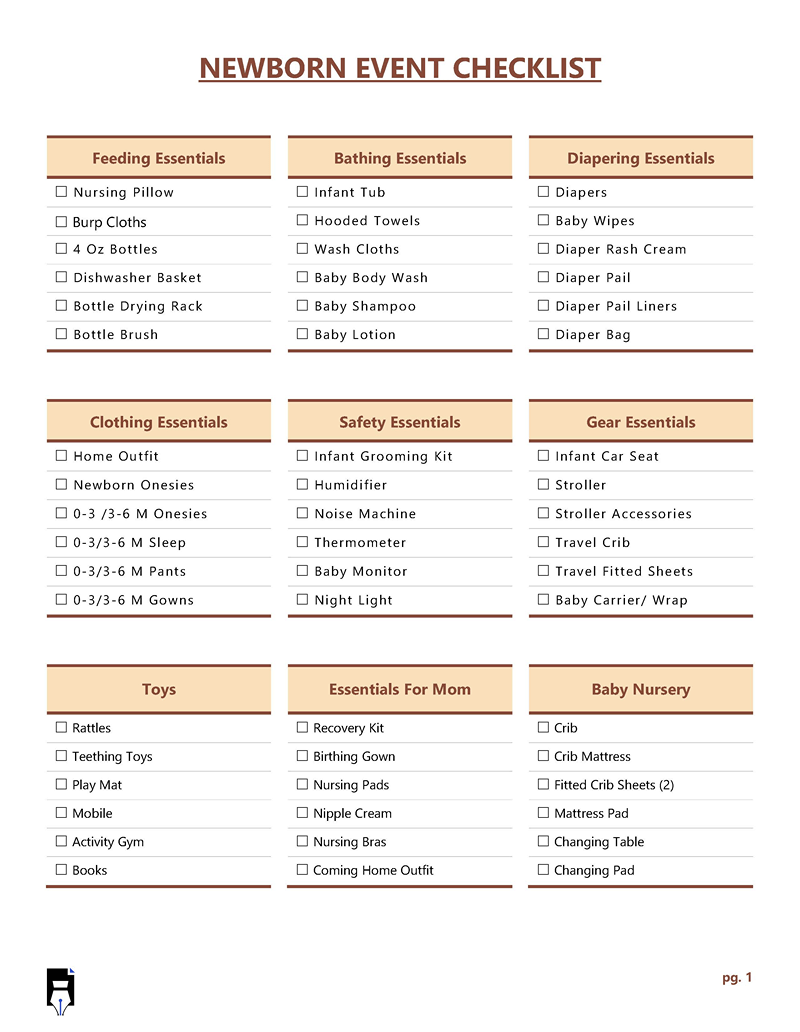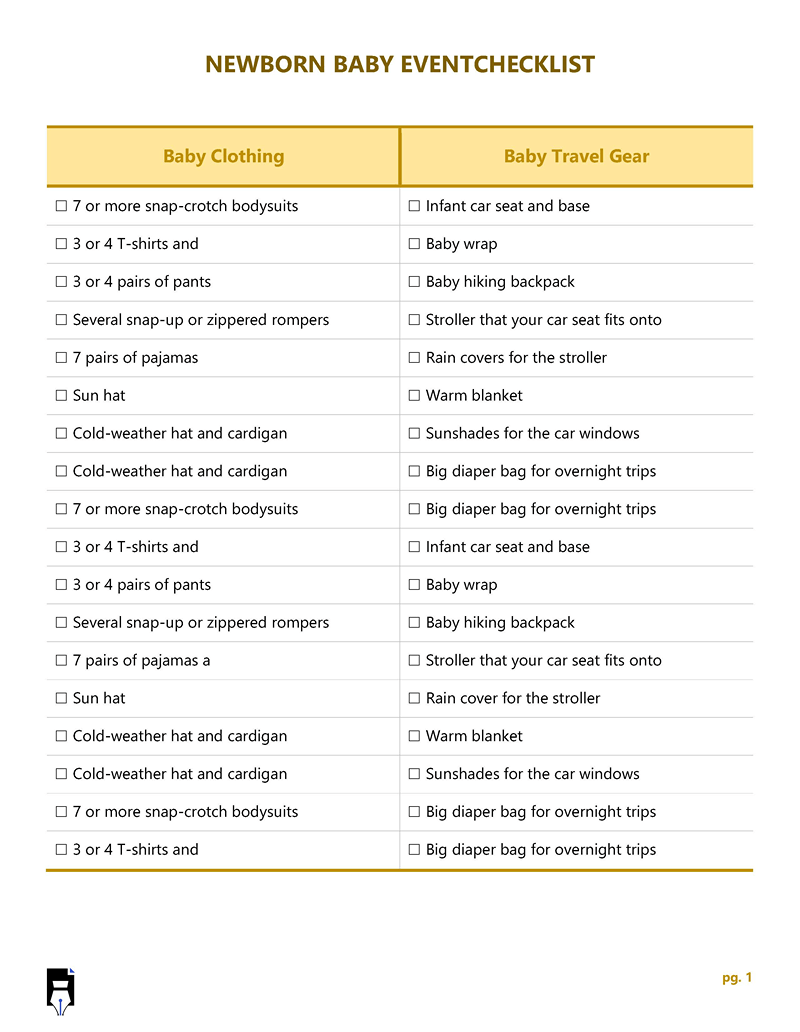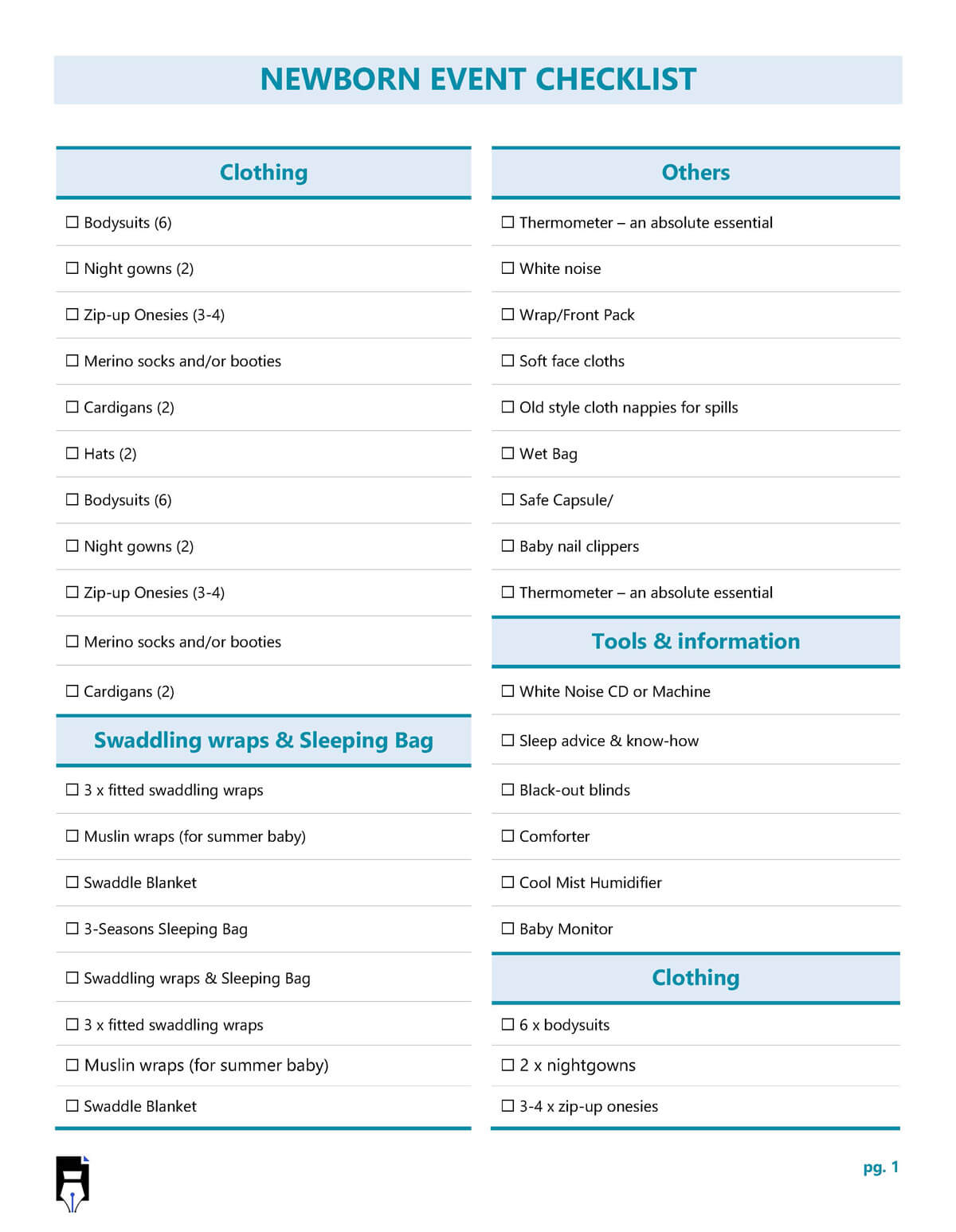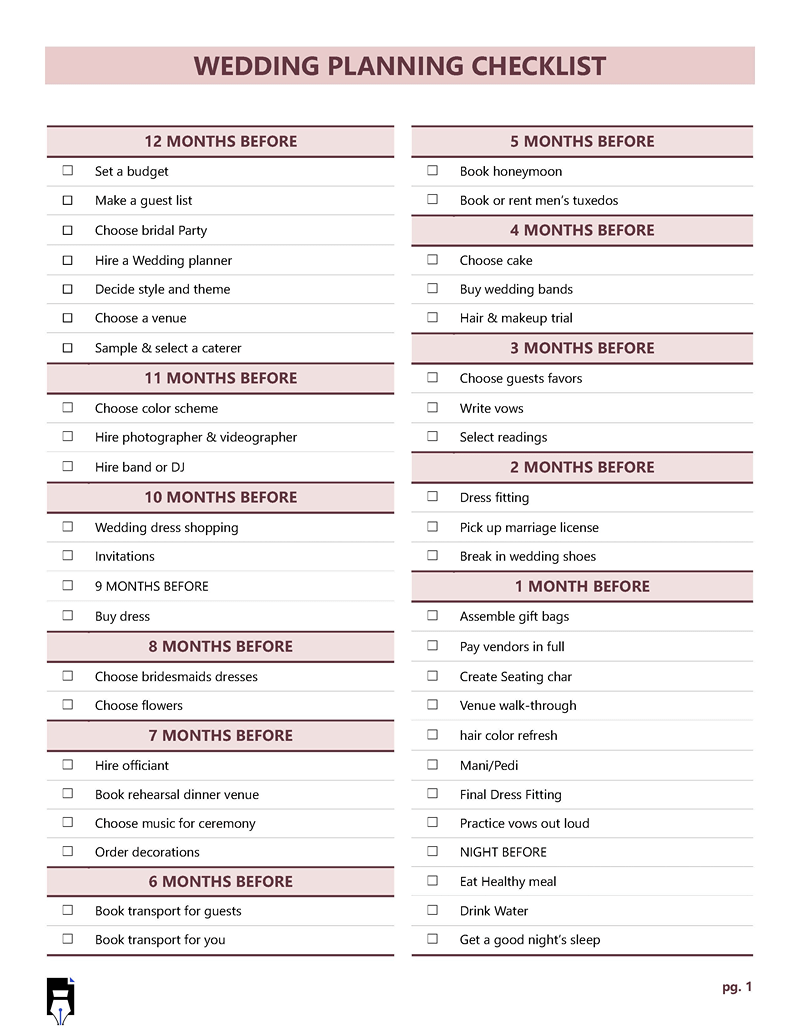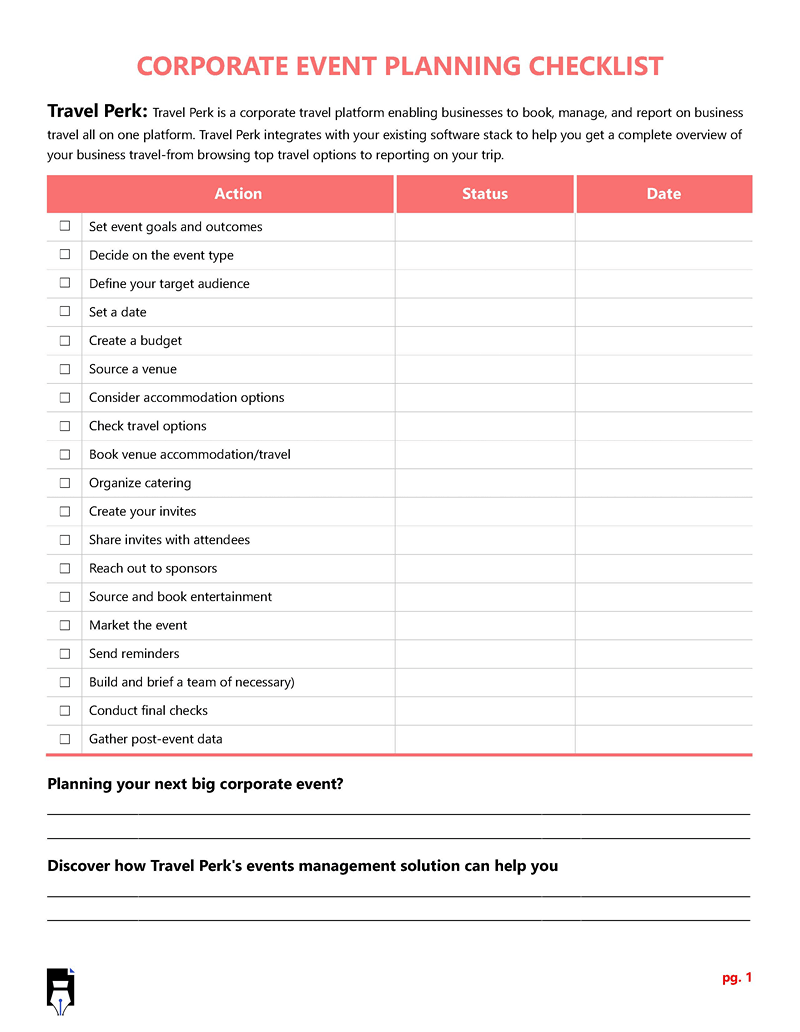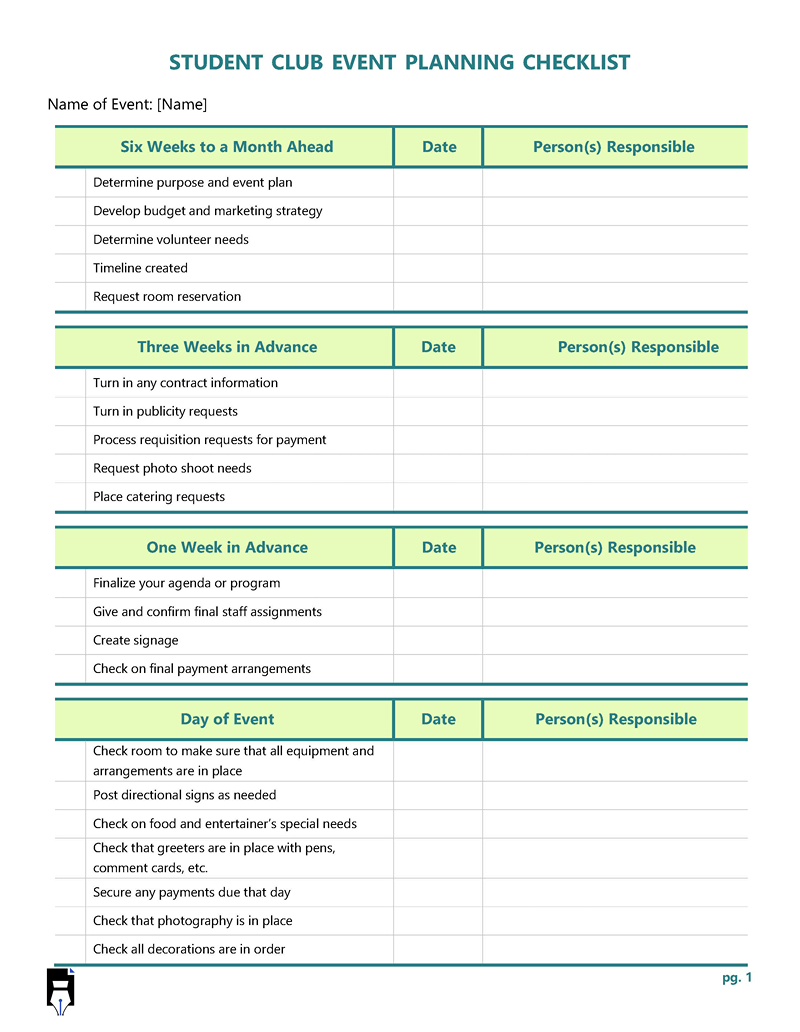An event planning checklist is a list of tasks that need to be completed to plan and execute an event successfully.
It is helpful when organizing and managing the various tasks and details that go into running a successful event. It helps to ensure that all necessary tasks are completed promptly and organized and that nothing is overlooked or forgotten.
A planning checklist helps prevent mistakes and oversights that could compromise the success of your event. It keeps the event planner organized and on track by providing a clear and structured plan for completing tasks. It lets them quickly observe what needs to be done and helps prioritize tasks to allocate time effectively. Since planners have to create a checklist for every event, making a template that can be reused multiple times is advisable.
If the planner needs to delegate tasks to others, a template may be helpful, primarily when working with a large team or organizing a significant event. Most importantly, it allows the planner to stay within the budget by allowing them to track expenses and compare them to their original budget.
Free Templates
Following are the event planning checklist templates:
This article will guide you on the elements of a template for a checklist and specific considerations you should make when planning your event.
Did You Know? The average successful event gets more than 1.4 million hits on social media before it ends. Social media awareness may spread the word about it, thus promoting your cause. You will typically need a planning checklist to have a successful event.
Considerations Before Making a Planning Checklist for an Event
When planning an event, you typically have limited resources to maximize its output. A checklist is a tool to help you attain this goal. Therefore, you must craft it to this effect.
Before making a template, you should consider the following elements to help you plan an event:
Make your event objectives clear
You should have a clear purpose for holding your event. A concise objective will help guide your planning process and help you determine the most appropriate event type. You also ought to acknowledge who it is for. Understanding the demographics and interests of the intended audience will help you tailor it for them and make it more appealing.
Ensure you have plenty of time
By starting the planning process early for an event, you will have more time to research and compare options, make decisions, and take care of all the necessary details. You also save money by having more time to shop for the best deals and negotiate with vendors. In addition, the earlier you plan it, the earlier you start promoting it. Therefore, you will have more time to reach your target audience and attract attendees.
Plan out the work
The most crucial aspect of the planning process is the budget. First, you should determine how much money you have to work with and allocate it to different areas, such as venue, catering, entertainment, and marketing. After that, consider the availability of the venues you want and any other similar events co-occurring. Next, ascertain the schedule of activities, speakers, entertainment, and other elements you will include. Finally, make a list of every task and assign the tasks to your team members to create a contingency plan in case of an emergency.
Use a template
A template is a pre-made downloadable document that gives you a structured way to organize and plan your event. Since most fields have already been filled, it provides a professional framework for organizing it, which can save time and effort in the planning process. Instead of starting from scratch and creating an event plan, you can simply fill in the details.
How to Plan an Event: A Complete Checklist Template
A template for planning an event should contain all the necessary information to execute it successfully. You risk its success if certain elements are missing from your checklist.
Below is a procedure on how to create a document that will keep you on time and execute a successful event:
Step 1: Add the date and time
Firstly, you need to record on the template when an event takes place. The date refers to the day, month, and year for clarity. The date and time are essential considerations for any planning exercise. Note that when setting the date and time for it, coordinate it with the availability of your attendees in advance to ensure that they can make proper arrangements. It is essential to consider any potential conflicts with other events or commitments your attendees may have.
Step 2: Capture the location of the event
The location is important so that logistical arrangements such as transportation of equipment and other essentials needed during the event can be made in good time. The venue should be captured in the checklist template. The selected venue must be able to accommodate the expected number of attendees. It should also be easily accessible for attendees by car, public transportation, or other means. Research and compare different venues to find the best location for it. Visiting the venue in person is also helpful in making a site assessment and determining its suitability by evaluating its layout and facilities. After identifying the ideal event, note it on your checklist.
Step 3: Note the type of event
There are different types of events. Examples include social, fundraisers, corporate, and music festivals. Its type is important to note in your checklist as it influences the equipment, food, drinks, and entertainment to be prepared.
Step 4: State the goal of the event
The template of the checklist should capture the main purpose of the event. Its goal can vary depending on the type and the context in which you organize it. Whether you aim to celebrate, educate, raise funds, or promote a product or service, your checklist should include its goal.
Step 5: Add the event objectives
Your event will usually have objectives that contribute to its goal. The checklist template must be able to record these objectives to facilitate proper planning. You need to understand the objectives during the planning stage, as objectives are used as criteria to gauge their success afterward. For example, if it is a launch party for a new video game, the objective might be to receive 100,000 pre-orders.
Step 6: Define the audience
The audience represents the intended attendees. The audience of your event may be professionals in a specific industry, students, potential customers, or members of the general public. Once you define the audience, you can understand their needs and interests and work towards making it relevant and engaging for your attendees. The checklist template should prompt you to input information that identifies your audience.
Step 7: Indicate the event budget
A well-crafted checklist template should have a placeholder for your event’s budget. This is because the budget helps specify its scope, scale, and available resources. Its budget may consist of various costs, including venue rental, AV equipment, food and drinks, marketing, and signage.
Step 8: Include the event design
The design of your event refers to the overall look and feel. This includes the program, seating arrangements, and agenda. A schedule, timeline, and presence of entertainers enliven the program. You can prepare a visual map detailing the seating layout, decorations, lighting, and audio-visual placement. Its design is essential as it helps create a cohesive and engaging experience for your attendees hence the need to cross it off from your checklist once done.
Step 9: Add the branding and theme
The theme refers to your event’s overall look and feels, including color scheme, decorations, and style. For example, an event for a technology company might have a futuristic theme, while an event for a nature conservation organization might have an eco-friendly theme. The appropriate theme can effectively communicate the purpose and message of your event to your attendees hence the need to checklist it. So, make sure that its brand and theme are reflected through the different elements of your template.
Step 10: Event décor
The décor entails an event’s decorative elements, such as flowers, balloons, lighting, and other visual elements that help to create the overall look and feel of the event. Their senses will determine attendee involvement. Your attendees will interact with these elements by sight, sound, smell, touch, and taste.
Step 11: Add food and drink
Depending on the type of event, your attendees will want food and refreshments. When planning the event, you should thoroughly research local caterers and compare their menus and prices before settling on the type of food and drinks. You should also consider the number of expected attendees and those who may have specific dietary restrictions. Determine how the food will be distributed using food stations, waiters, or passed appetizers. Plan your menu and specify on your checklist if you will serve alcohol at your event.
Step 12: Music and entertainment
Music and entertainment can be essential to your event, adding energy and excitement to the atmosphere. If you plan to book a local band, specify it in your template when creating your checklist: research local bands, DJs, and other entertainment options in your area. Consider cost, availability, and style when making your decision. Make sure to book them well in advance to ensure their availability.
Step 13: Add event technology
A template allows you to record the event technology needed for different tasks and can go a long way in planning for its success. The technology you employ during your event may make work easier for your staff and attendees. You may use online registration, ticketing, projectors, screens, or mobile event applications.
Outline all the technology implemented during the event on your checklist. Using event technology, you can make your event more efficient, interactive, and engaging for attendees. It is essential to carefully consider which technologies will be most beneficial for your specific event and ensure you have the necessary resources to implement them.
Step 14: Include publicity
A good template should market your event by providing some publicity. This is because advertisement is important for the success of an event as it ensures your audience is aware of when and where the event will take place. You may market your event on social media platforms if the intended audience is the general public. Consider using targeted ads, as they may help you widen your reach. You may also engage influencers to spread the word about your event. Detail the strategy you will employ on your checklist for planning the event.
Step 15: Specify AV and production equipment
The equipment is meant to facilitate communication during the event. If you are not experienced with AV and production, it may be helpful to research local AV companies and hire professionals to ensure everything runs smoothly. Select the AV and production elements that fall within your budget and detail them on your checklist. The audio components you require for your event may include microphones, amplifiers, connecting wires, and speakers. You may need a video camera and a stable internet connection if you want to record or stream.
Step 16: Specify sponsorships and exhibitors
A well-crafted template should allow you to list the different sponsors and exhibitors willing to support your cause. This is because you may need event sponsors to provide financial support for your event in exchange for promotional opportunities. Sponsors can play a crucial role in the success of an event, as they can help cover the event’s costs and bring additional exposure and credibility to the event.
You may also invite individuals or organizations who want to exhibit their products and services to your event. Have a list of all the sponsors and exhibitors you will work with on your checklist. Once you have identified sponsors and exhibitors, communicate the sponsorship terms and any deliverables they are responsible for.
Step 17: Add health and safety
It is important to ensure health and safety measures are observed before the event occurs. This is to protect your attendees during your event. Communicate health and safety protocols and expectations to attendees, including any necessary precautions they need to take. There should be a plan for responding to emergencies that may arise during the event, such as a medical emergency or natural disaster.
Step 18: Finalize the template by adding event-day logistics
The last item you should include in the template is event-day logistics. Event logistics include tasks that will occur on the actual day of the event, such as event launch, activities, breaks, and termination. Ensure all tasks and responsibilities are assigned to team members or volunteers. Anticipate potential issues that may arise and have a plan for how to handle them. Ensure that all event staff, including vendors and volunteers, know the schedule and any important details.
Post-Event Checklist
After your event, you and your staff must complete specific tasks to cover all the details and ensure everything is appropriately cleaned and organized. You will also need to gauge whether your event succeeded or improvements can be made.
Consider the following points when finalizing your event:
Create a list of criteria
Create a list of potential criteria by considering different aspects of the event, such as the location, logistics, content, speakers, format, etc. Next, decide which criteria are most important based on your goals and objectives. Organize the criteria into a clear and concise list that is easy to understand and use. You should include a ranking system to help you assess the event against each criterion. Use the criteria list to evaluate the event and identify areas for improvement.
Send a survey
Send a survey to all attendees, staff, sponsors, or other stakeholders involved in your event. Ensure to provide clear instructions on completing the survey and a deadline for when it should be completed.
Once you have received responses from the survey, analyze the data to gauge what worked well and what could be improved for future events. Share the results with relevant stakeholders and use them to inform future planning. Compare invoices from vendors and service providers against budget projections to determine the event’s success.
Post-event communication
Post-event communication is important for maintaining relationships with attendees, stakeholders, and sponsors for gathering feedback to inform future planning. You may send a thank-you note or email to attendees and stakeholders, thanking them for participating and highlighting any key takeaways or memorable moments from the event.
Consider sharing highlights from the event on social media or through a newsletter, such as photos, videos, or testimonials. This can help create a sense of community and engagement.
If your event had specific goals or objectives, share the results with attendees and stakeholders and outline any next steps that will be taken based on the event’s outcomes. Finally, keep in touch with attendees and stakeholders after the event by sending updates, inviting them to future events, and engaging with them on social media or email.
Marketing and social media
Develop a social media marketing plan for your event. The plan outlines the event’s aspects that you will post on social media and the channels you will use. Make sure to include mixed content, such as event information, behind-the-scenes glimpses, and engaging visuals. Use social media advertising to reach a larger audience and target specific demographics.
Facebook, Instagram, and Twitter offer advertising options that permit you to target specific demographics and interests. Use social media analytics tools to track your marketing efforts’ success and identify improvement areas. This can help refine your planning strategy and better understand what works for your event’s audience.
Conclusion
A checklist is helpful in organizing and managing many tasks involved in planning your event. It helps ensure that all necessary tasks are completed promptly and helps prevent last-minute emergencies.
A well-crafted checklist template for planning for an event should include sections to record the tasks related to event goals and objectives, budget, venue and logistics, marketing and promotion, and post-event follow-up. Following the article’s guidelines can increase your chances of executing a successful event.
